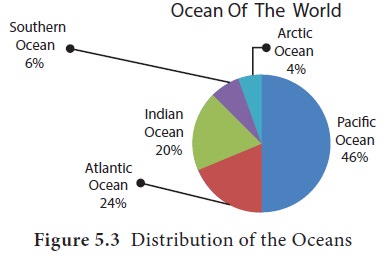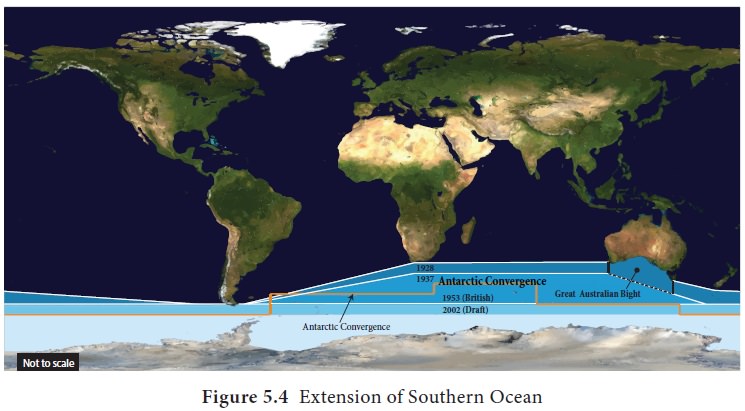Chapter: 11th Geography : Chapter 5 : Hydrosphere
Oceans of the world
Oceans
of the world

1. The Pacific Ocean
Pacific Ocean is the largest ocean in the world. It
is bigger than all continents put together. Portuguese explorer Ferdinand
Magellan in 1521 named the ocean Pacific Ocean meaning ‘peaceful’ because he
felt the ocean to
2. The Atlantic Ocean
Atlantic Ocean is the second largest ocean of the
world. The Atlantic Ocean’s name refers to Atlas of Greek mythology. The North
Atlantic Ocean was formed by the break-up of the supercontinent Pangaea and the
south Atlantic was formed when the Gondwana land broke in the geological past.
Fact
File
The
Suez Canal, an artificial sea-level waterway in Egypt, connecting the Mediterranean
Sea to the Red Sea through the Isthmus of Suez was officially opened on
November 17, 1869.
3. The Indian Ocean
The Indian Ocean is the third-largest in the world.
It is named after India. Its calm open water has encouraged the sea trade
earlier than the Atlantic or the Pacific Ocean.
4. The Southern Ocean
The Southern Ocean is the world’s
fourth largest ocean. The Southern Ocean is the youngest ocean and was
formed 30 million years ago when South America moved away from Antarctica,
opening the Drake Passage (Figure 5.4). This ocean has the boundary where cold,
northward flowing water from the Antarctic mixes with warmer sub Antarctic
water. During summer in southern hemisphere over half of the Southern Ocean
is covered with ice and icebergs.
5. The Arctic ocean
The Arctic Ocean is shallower and smaller than the
other four oceans. It is completely surrounded by Eurasia and North America. It
is covered by ice completely in winter. The Arctic Ocean’s surface temperature
and salinity vary seasonally as the ice cover melts and freezes alternatively.
Its salinity is the lowest on an average of the five major oceans. Bering
Strait connects the Arctic Ocean with the Pacific Ocean while the Greenland Sea
and the Labrador Sea connects it with the Atlantic. The deepest point is Litke
Deep in the Eurasian Basin, at 5,450 m.

Related Topics